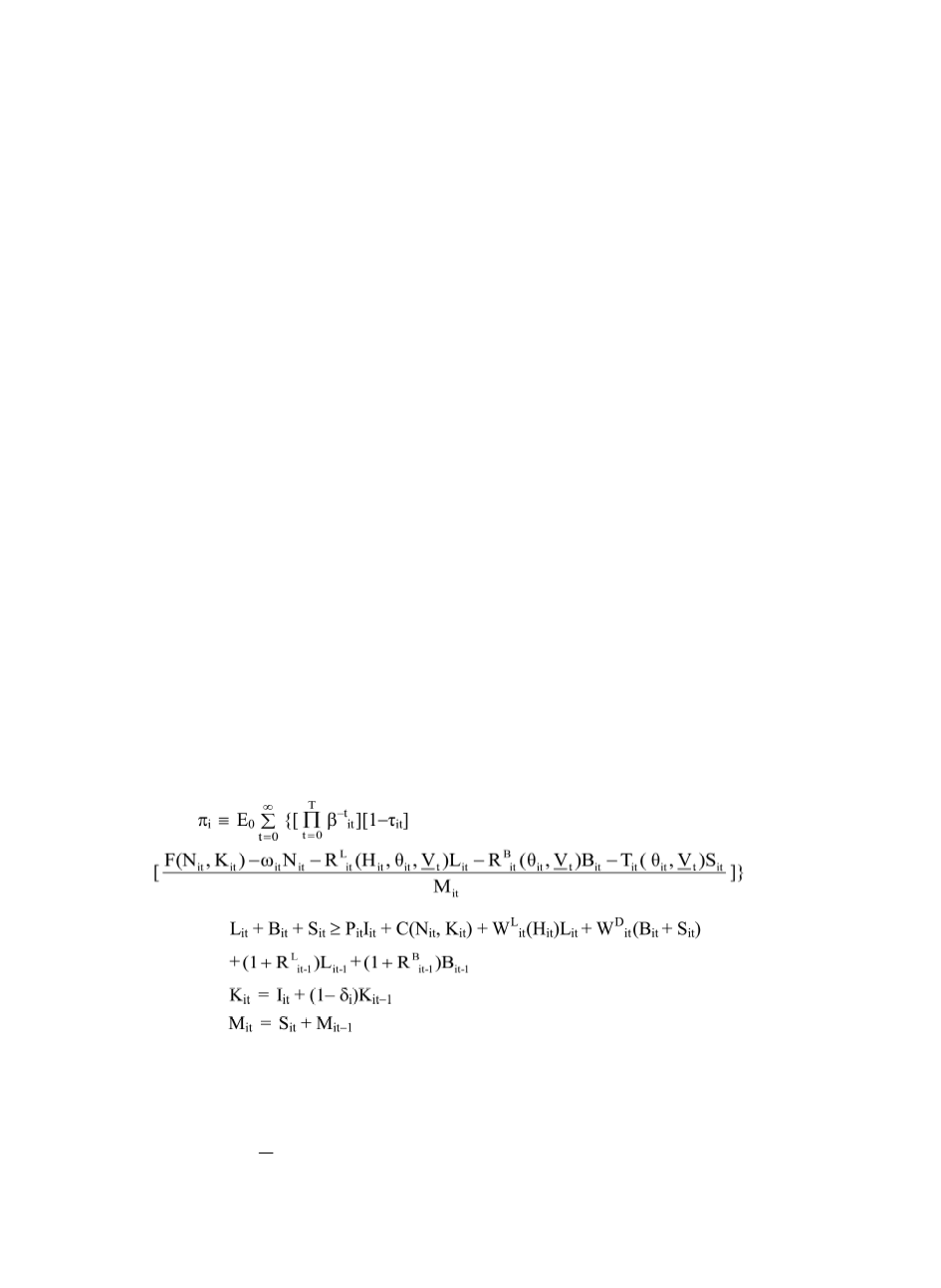

臺大管理論叢
第
26
卷第
3
期
141
and banking relationship. Examination of these relationships provides not only a more solid
microeconomic analysis of the responses of heterogeneous firms to different factors affecting
their choices of funding sources and banking relationship, but also some corresponding
implications for lending activities, strategies, and policies in the financial market, neither of
which are theoretically well-developed in current literature.
2. Design/Methodology/Approach
The most important feature of this study is to set up a micro-foundation theoretical
framework based on the viewpoint of information asymmetry, dilution costs, liquidation
efficiency, types of securities paradigm, and types of fund providers paradigm. The
simplified theoretical maximization model developed in this study describes a financial
market in which entrepreneurs can finance a long-term project from two categories of
funding sources– direct financing and indirect financing. The focus of the framework is the
determination of heterogeneous firms’ optimal choices of diversified funding sources and
banking relationship, which are simultaneously determined by an entrepreneur’s information
asymmetry, investment, liquidation efficiency, and fund providers’ offering terms and
intermediation characteristics, given a certain state of macro-financial environment.
The simplified representative entrepreneur’s intertemporal optimization problem is to
maximize the discounted after-tax expected earnings per dollar of equity subject to the
financing and investment constraints. Technically,
In order to investigate the effects of different exogenous variables, such as the
entrepreneur’s creditworthiness level θ
it
(the proxy for information asymmetry) and macro-
financial conditions V
t
, on endogenous variables, such as the optimal direct financing level
MAX
subject to


















